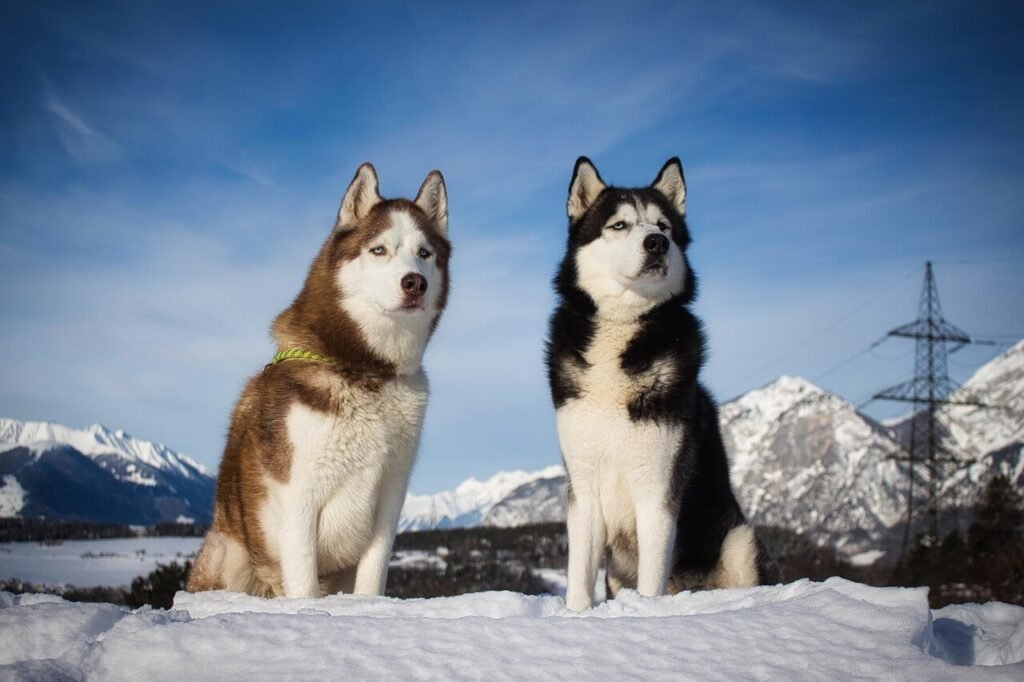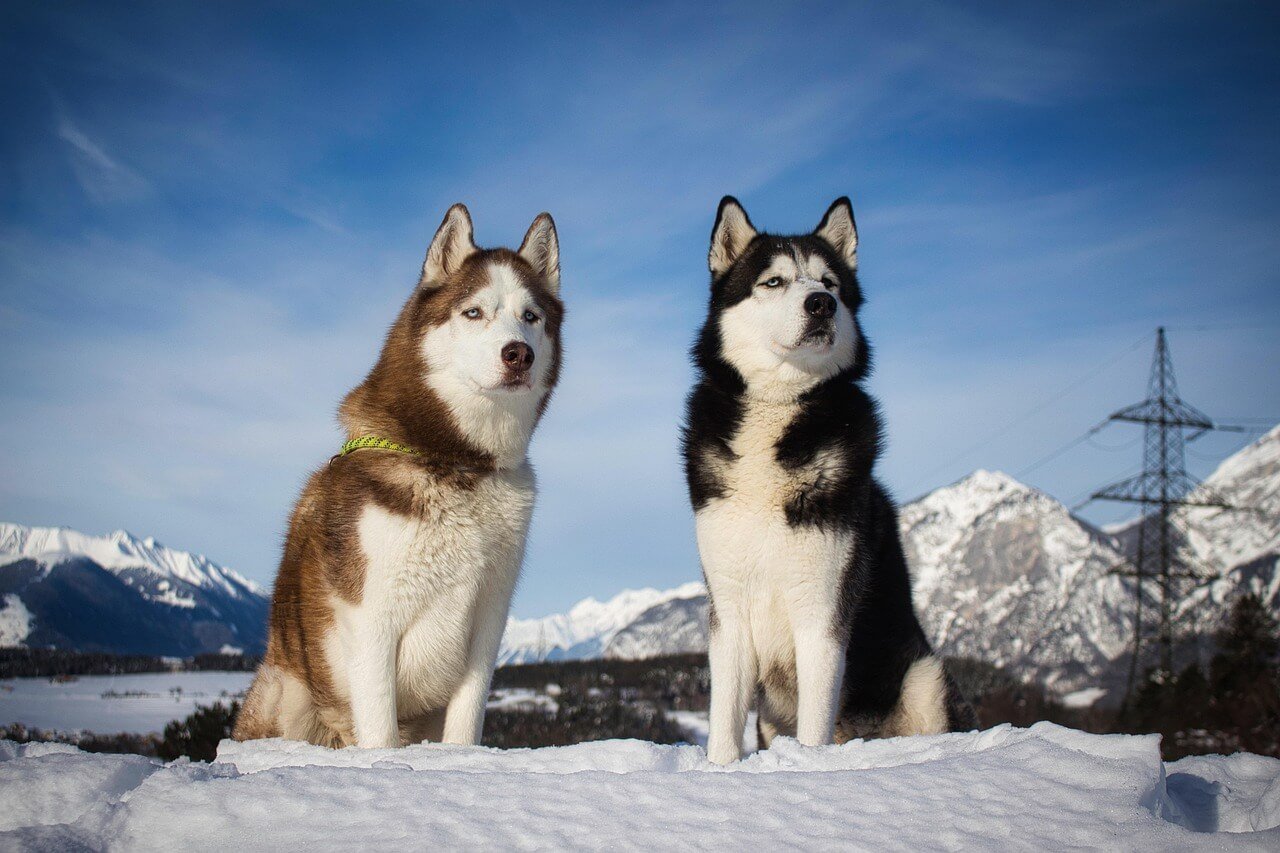Discovering the Wild Roots: What Dog Is Closest to a Wolf?
Dogs have been our loyal companions for thousands of years, evolving from their wild ancestors to become the diverse breeds we know today. But amidst this incredible transformation, some dogs have retained more of their ancestral traits than others. If you’ve ever wondered what dog is closest to a wolf, you’re not alone. This question has intrigued scientists, dog enthusiasts, and curious minds alike. In this article, we’ll explore the fascinating connection between modern dogs and their wild relatives, uncovering which breeds carry the most wolf-like characteristics.
The Science Behind Domestication
Understanding what dog is closest to a wolf requires a glimpse into the science of domestication. Over tens of thousands of years, humans selectively bred dogs for specific traits, gradually shaping them into the pets we adore today. However, some breeds still exhibit physical and behavioral traits that closely resemble their wolf ancestors. Here are some key factors that contribute to these similarities:
- Genetic Proximity : Certain breeds share a higher percentage of DNA with wolves due to minimal selective breeding.
- Physical Traits : Features like a thick double coat, pointed ears, and a bushy tail are often seen in wolf-like dogs.
- Behavioral Instincts : Strong prey drives, independence, and pack-oriented behavior are reminiscent of wolves.
- Size and Build : Larger, muscular builds are common among breeds with wolf ancestry.
- Social Structure : Like wolves, these dogs often thrive in structured environments with clear hierarchies.
While no domesticated dog is truly identical to a wolf, understanding these shared traits helps us identify which breeds come closest. So, what dog is closest to a wolf? Let’s dive deeper into the answer.
Top Breeds with Wolf-Like Characteristics
When exploring what dog is closest to a wolf, certain breeds consistently stand out. These dogs not only resemble wolves in appearance but also share some of their natural instincts. Here’s a closer look at the top contenders:
- Siberian Husky : Known for their striking blue or multicolored eyes, Huskies are one of the most wolf-like breeds in terms of appearance and temperament.
- Alaskan Malamute : With their powerful build and thick fur, Malamutes are often compared to wolves.
- Czechoslovakian Wolfdog : A hybrid breed specifically developed to combine the traits of wolves and dogs.
- Saarloos Wolfdog : Created by crossing German Shepherds with wolves, this breed retains many wolf-like qualities.
- Tamaskan Dog : Though not directly descended from wolves, this breed was selectively bred to mimic their appearance.
These breeds showcase a blend of wild beauty and domesticated charm, making them popular choices for those seeking a wolf-like companion. Yet, it’s important to remember that even these dogs require proper training and care to thrive in a home environment.
Expert Insight: Dr. Jane Goodall on the Bond Between Dogs and Wolves
Renowned primatologist and conservationist Dr. Jane Goodall once remarked, “The domestic dog carries within it the echoes of its wild ancestors. Breeds that resemble wolves remind us of the deep connection between humans and nature.” Her words highlight how wolf-like dogs serve as a bridge to our understanding of the natural world. This perspective underscores their unique role in both our homes and ecosystems.
Check this guide 👉 The German Shepherd Cattle Dog Mix: Best 7 Expert Tips!
Check this guide 👉 Catahoula Leopard Dog Pitbull Mix: Best 7 Expert Tips!
Check this guide 👉 Great Pyrenees Bernese Mountain Dog: Top 7 Best Care Tips!

Trait | Breeds Exhibiting This Trait |
|---|---|
Thick Double Coat | Siberian Husky, Alaskan Malamute |
Pack-Oriented Behavior | Czechoslovakian Wolfdog, Saarloos |
High Energy Levels | Tamaskan Dog, Siberian Husky |
Independent Nature | Alaskan Malamute, Saarloos Wolfdog |
Strong Prey Drive | Czechoslovakian Wolfdog, Tamaskan |
Challenges of Owning a Wolf-Like Dog
While the allure of owning a dog that resembles a wolf is undeniable, it’s essential to consider the challenges involved. Understanding what dog is closest to a wolf isn’t just about aesthetics—it’s about recognizing the unique needs of these breeds. Here are some factors to keep in mind:
- Exercise Requirements : These dogs need plenty of physical activity to stay happy and healthy.
- Training Needs : Their independent nature means they may require patient, consistent training.
- Socialization : Early exposure to different people, animals, and environments is crucial.
- Space Considerations : Many wolf-like breeds thrive in homes with large yards or open spaces.
- Dietary Needs : Some owners opt for raw diets to mimic the natural eating habits of wolves.
Owning a wolf-like dog can be incredibly rewarding, but it’s not a decision to take lightly. Proper preparation ensures both you and your canine companion enjoy a fulfilling relationship.
Why People Are Drawn to Wolf-Like Dogs
The fascination with what dog is closest to a wolf goes beyond mere curiosity. There’s something inherently captivating about these majestic animals. Here’s why so many people are drawn to wolf-like dogs:
- Aesthetic Appeal : Their wild, untamed looks make them stand out from other breeds.
- Connection to Nature : These dogs evoke a sense of wonder and remind us of our bond with the natural world.
- Unique Personalities : Their intelligence and independence create a dynamic and engaging partnership.
- Cultural Symbolism : Wolves hold significant meaning in various cultures, adding to their mystique.
- Adventure Companions : High-energy breeds are perfect for outdoor enthusiasts who love hiking and exploring.
For many, choosing a wolf-like dog is about embracing a lifestyle filled with adventure and appreciation for the wild. It’s no wonder these breeds continue to capture hearts worldwide.
The Role of Genetics in Wolf-Like Dogs
Understanding what dog is closest to a wolf involves delving into the role of genetics. While all dogs share a common ancestor with wolves, certain breeds have retained more genetic similarities due to their breeding history. Here’s how genetics play a pivotal role:
- DNA Studies : Research shows that some breeds, like the Czechoslovakian Wolfdog, share over 30% of their DNA with wolves.
- Hybrid Breeds : Crossbreeding wolves with domestic dogs has resulted in hybrids that exhibit wolf-like traits.
- Selective Traits : Breeders often focus on preserving physical and behavioral traits reminiscent of wolves.
- Inherited Instincts : Hunting, pack behavior, and territoriality are passed down through generations.
- Adaptability : Despite their wild ancestry, these dogs adapt well to human environments when properly trained.
Genetics not only shape the appearance of wolf-like dogs but also influence their behavior, making them fascinating yet complex companions.
Training Tips for Wolf-Like Dogs
If you’re considering a dog that closely resembles a wolf, training is crucial to ensure harmony in your household. These intelligent and independent breeds require specialized approaches to bring out their best. Here are some tips to guide you:
- Start Early : Begin training and socialization as puppies to establish trust and boundaries.
- Positive Reinforcement : Use rewards like treats and praise to encourage desired behaviors.
- Consistency Matters : Stick to a routine to help them understand expectations.
- Mental Stimulation : Incorporate puzzle toys and games to challenge their sharp minds.
- Professional Help : Consider enlisting a trainer experienced with high-energy or independent breeds.
With patience and dedication, even the most wolf-like dogs can become well-behaved and loving members of your family.
Health Considerations for Wolf-Like Breeds
When exploring what dog is closest to a wolf, it’s essential to consider their health needs. These breeds often face unique challenges due to their robust builds and active lifestyles. Here’s what potential owners should know:
- Joint Health : Large breeds like Alaskan Malamutes are prone to hip dysplasia and arthritis.
- Dental Care : Regular brushing and check-ups prevent dental issues common in powerful jaws.
- Dietary Needs : High-protein diets support their energy levels and muscular frames.
- Parasite Prevention : Their thick coats require vigilance against fleas, ticks, and other parasites.
- Regular Exercise : Physical activity is vital to prevent obesity and related health problems.
By prioritizing preventive care and staying informed, you can ensure your wolf-like companion enjoys a long, healthy life by your side.
Frequently Asked Questions
What dog is closest to a wolf genetically?
The Czechoslovakian Wolfdog and Saarloos Wolfdog are among the closest due to their direct wolf ancestry.
Are wolf-like dogs aggressive?
Not inherently, but their strong instincts and high energy levels require proper training and socialization.
Do wolf-like dogs get along with other pets?
It depends on the individual dog and its upbringing, but early socialization can help foster positive relationships.
How much exercise do wolf-like dogs need?
They typically require at least 1-2 hours of vigorous exercise daily to burn off excess energy.
Can wolf-like dogs live in apartments?
While possible, it’s not ideal. These breeds generally fare better in homes with ample space to roam.
Embracing the Wild Spirit
In conclusion, discovering what dog is closest to a wolf reveals not only the fascinating history of domestication but also the enduring bond between humans and animals. Whether you’re drawn to their striking appearance, their untamed spirit, or their rich heritage, wolf-like dogs offer a unique blend of beauty and challenge. By understanding their needs and respecting their instincts, you can forge a lifelong connection with one of nature’s most remarkable creations. So, if you’re ready to welcome a piece of the wild into your life, consider one of these extraordinary breeds—they might just be your perfect match.
Cat Fever Treatment: Best 7 Expert Tips! Discover expert advice on identifying, managing, and treating fever in cats to ensure their quick recovery and well-being.
Understanding Meloxicam for Cats: Best 7 Expert Tips! Learn how to safely administer meloxicam, manage side effects, and ensure your cat's comfort with expert advice on feline pain relief.
Amoxicillin for Cat UTI: Best 7 Expert Tips! Discover safe usage, dosage guidelines, and expert advice on treating feline urinary tract infections effectively with amoxicillin.
Understanding Cat Cancer Treatment: Best 7 Expert Tips! Discover expert advice on managing feline cancer, from early detection to treatment options, ensuring your cat’s health and comfort.





